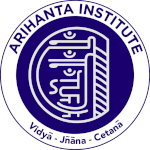Analyzing Jain Philosophy of Language and Mantra
Back To Blogs


Analyzing Jain Philosophy of Language and Mantra
Part 1
09/29/2025
Based on 2025 | “Introduction to Jain Philosophy of Language,” by Cogen Bohanec | In Mantra Jñāna: A Passage Through the Sūkṣma Śarīra, based on the Writings and Discourses by Ācārya Sushil Kumar | By Parveen Jain | Edited by Cogen Bohanec.
Overview
Understanding the Jain theory of mantra and language philosophy presents a series of critical challenges, particularly in distinguishing Jain uses of linguistic terms from their more familiar Hindu context. Without clear metaphysical distinctions, there is a risk of misinterpreting Jain teachings as Hindu, due to overlapping terminologies. Given that Jain philosophy diverges significantly from Hindu and Buddhist doctrines, recognizing these differences is crucial. Exploring these contrasts provides foundational knowledge necessary for comprehending the nuances of Jain interpretations of mantra and language.
One central issue involves understanding the reasons for the efficacy of mantras within Jainism. Unlike Hindu theories that suggest a direct linguistic connection between words and objects, Jainism lacks this intrinsic link. Thus, one may question why mantras appear to work for Jains. By examining themes from Jain teachings, a Jain theory of mantra efficacy emerges, highlighting aspects of Jain tantra and the skepticism it might provoke among non-Jain audiences.
Defining tantra, which is the background for any theory of mantra efficacy, is notoriously complex, encompassing a range of features such as esoteric rituals, subtle energy systems, and mantra usage. Within Jainism, transgressive practices are absent, yet aspects like visual meditation, mantra usages, and subtle body development persist. These elements harmonize to emphasize mantra usage for spiritual progression rather than worldly gain. This approach reflects Jain tantra’s unique adaptation, which avoids transgressive elements of other tantric traditions while integrating tantric aspects into its ascetic framework.
Recent research highlights the contentious classification of Jain practices as "tantric." While Jainism traditionally eschews the antinomian attributes of broader tantric traditions, it incorporates mantras in conventional tantric ways. Gough (2021), for example, argues for the presence of tantric elements in Jainism, pointing out historical biases in scholarship that overlook these aspects. By dismissing tantra's relevance, scholars miss the opportunity to explore Jainism's nuanced integration of ascetic and tantric practices.
When engaging with Western perspectives, modern readers influenced by Western intellectualism—ranging from Saussurean linguistic arbitrariness to pragmatist functionalism—may find the belief in mantric efficacy puzzling. The anti-realist stance on language, prevalent in Western thought, challenges the acceptance of Indian linguistic philosophies, which attribute a reality-shaping power to language. This "epistemic friction" complicates the understanding of Jain mantraśāśtra for Western academics, who might dismiss it as non-empirical.
Addressing these intellectual frictions requires a mutual understanding of differing frameworks. Some scholars argue for openness to other perspectives, recognizing their contextual validity alongside one's own. Engaging with Jain principles like anekāntavāda fosters a collaborative, enriching dialogue between scholars and practitioners. This approach not only enhances scholarly discourse but also deepens personal belief systems and lived experiences, aligning with anekāntavāda's aim to broaden perspectives through diverse viewpoints.
This exploration sets the stage for a deeper dive into Jain theories of language and mantra, examining both the philosophical and practical dimensions of Jain tantra. The goal is to offer a comprehensive understanding of how Jain thought navigates its complex relationship with language, spirituality, and cultural interpretation. By illuminating these intricate dynamics, both traditional and contemporary discourses on mantra and its efficacy are enriched, offering profound insights into the unique Jain perspective.
Exploring Linguistic Realism in Dharma Traditions: Hindu, Buddhist, and Jain Perspectives
The realm of linguistic philosophy in Dharma traditions—encompassing Hindu, Buddhist, and Jain schools—offers a profound exploration into how language is perceived and utilized across different philosophical doctrines. Each tradition presents unique insights into the metaphysical and epistemological aspects of language, reflecting broader philosophical stances within each tradition. Through understanding these perspectives, we gain a deeper appreciation of how language is interwoven with consciousness and reality.
Hindu Realism: Varṇa-vāda and Sphoṭa-vāda
Within Hindu philosophy, there are two primary schools of thought regarding linguistic realism: Varṇa-vāda and Sphoṭa-vāda. Varṇa-vāda, rooted in the Pūrva-mīmāṃsā philosophical school, emphasizes a "hard" linguistic realism where phonemes are seen as objectively real. This perspective posits an eternal relationship between words (śabda) and their meanings (artha), asserting that each phoneme inherently carries meaning. This view suggests an external, eternal linguistic structure that exists independently of human consciousness, aligning with the notion of śabda-brahman.
On the other hand, Sphoṭa-vāda represents a "soft" realism, principally discussed by Hindu grammarians like Pāṇini and Bhartṛhari. In this view, meaning is perceived as a "burst" of understanding that arises only upon the completion of a sentence, rather than within individual phonemes. Sphoṭa is considered an eternal, changeless entity that exists both externally and internally within the consciousness. This theory maintains a form of linguistic realism but posits that the relationship between word and meaning occurs primarily within human consciousness, reflecting a monistic conception of language as a divine, eternal entity.
Buddhist Anti-Realism: Language as Illusion
In stark contrast to Hindu realism, Buddhist philosophies, particularly in the Mahāyāna tradition, often approach linguistic structures with a notable anti-realism. Language is regarded as inherently deceptive, perpetuating illusions and ignorance in its depiction of a world seen as ultimately unreal. The Mādhyamika school, for instance, views language as a tool that binds beings to saṃsāra through its false depiction of individuality and permanence. Words are considered fictitious, serving only to name and perpetuate illusory entities rather than convey any inherent truth.
This linguistic anti-realism aligns with the broader Buddhist doctrine of anātman, which denies the existence of a permanent, independent self. Language, in this view, is a construct that sustains the delusion of separate entities, detracting from the ultimate goal of enlightenment. However, despite their skeptical stance on language, Buddhists acknowledge its utilitarian value in conveying teachings that guide followers towards spiritual liberation.
Jainism: A Middle Path in Linguistic Realism
Jain philosophy offers a distinctive perspective that seeks to balance the realism of Hinduism with the anti-realism of Buddhism. Jain thinkers propose a nuanced understanding of language, emphasizing its existence within the jīva, or soul, thus affirming a "soft" realism. According to Jainism, language is both a subjective and objective reality, existing as a capacity of conscious beings without any extra-subjective, eternal existence apart from them.
The Jain approach aligns with their broader metaphysical stance of anekānta-vāda, which accommodates multiple, often seemingly contradictory perspectives. In linguistic terms, this means accepting that universals and particulars are intertwined, with no absolute separation between the two. Language, for Jains, serves as a tool for expressing the real nature of entities through their universalized particularities, without asserting an eternal, independent existence akin to varṇa-vāda.
Jains also critique the concept of sphoṭa as posited by Hindu grammarians, arguing that the understanding or "burst" of meaning does not require an external, monistic source but is stimulated internally within the jīva. This perspective reinforces the idea that meaning in language arises from subjective conventions and associations, rather than an inherent, objective reality.
Concluding Reflections
The comparative study of linguistic theories in Dharma traditions reveals a rich tapestry of philosophical thought, reflecting broader metaphysical and epistemological concerns within each tradition. Hinduism, with its emphasis on linguistic realism, underscores the eternal, divine nature of language as an external structure. Buddhism, conversely, challenges the very notion of language's inherent meaning, viewing it as a construct that perpetuates illusion.
Jainism, true to its doctrine of anekānta-vāda, synthesizes these opposing views, offering a balanced perspective that affirms the reality of language within the conscious experience of living beings. This approach not only highlights the interconnectedness of universals and particulars but also reflects a broader commitment to accommodating diverse viewpoints within a coherent philosophical framework.
Ultimately, the exploration of linguistic theories across these traditions enriches our understanding of the complex interplay between language, consciousness, and reality. It challenges us to consider how language shapes our perception of the world and our place within it, inviting us to engage with these ancient wisdom traditions in a meaningful dialogue that resonates with contemporary philosophical inquiries.
Gough, Ellen. 2021. Making A Matra: Tantric Ritual and Renunciation on the Jain Path to Liberation. Chicago: The University of Chicago Press.
If you are interested in learning more on this topic, consider the Master of Arts in Engaged Jain Studies—a fully-online graduate program offered by Claremont School of Theology (CST). Arihanta Institute faculty are engaged at CST as Adjunct Faculty members under an academic agreement, contributing their expertise and teaching courses within this concentration. Learn More.
Cogen Bohanec, MA, PhD holds the position of Assistant Professor in Sanskrit and Jain Studies at Arihanta Institute where he teaches various courses on Jain philosophy and its applications. He received his doctorate in Historical and Cultural Studies of Religion from the Graduate Theological Union (GTU) in Berkeley, California where his research emphasized comparative dharmic traditions and the philosophy of religion. He teaches several foundational self-paced, online courses based in Jain philosophy, yoga, ecology, languages, and interfaith peace-building, including:
